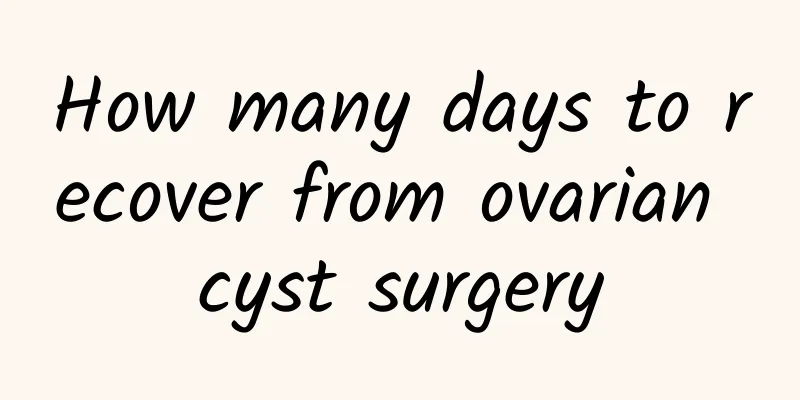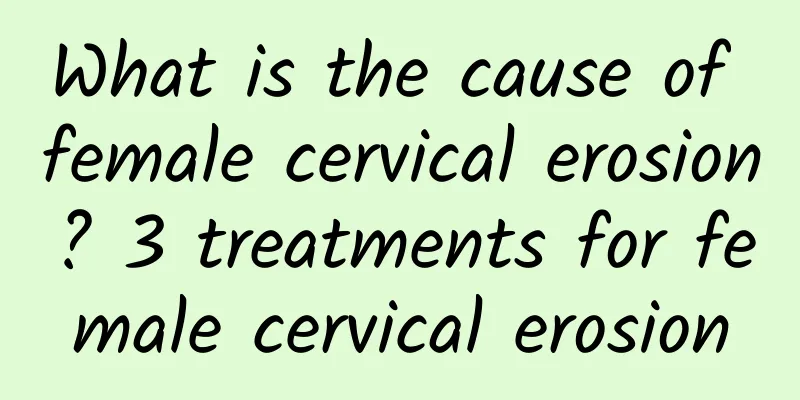What are the symptoms of uterine adenomyoma? What should I do if I have uterine adenomyoma?

|
What are the symptoms and treatment of uterine adenomyosis? Uterine adenomyosis is a common gynecological disease that can cause a series of discomfort and symptoms to patients. This article will introduce the symptoms of uterine adenomyosis and some common treatments. 1. What is adenomyoma? Adenomyoma is a benign uterine fibroid tumor that develops in the smooth muscle layer of the uterus and is composed of muscle cells and connective tissue. Adenomyomas can be single or multiple and vary in size. When the fibroids grow larger, they can cause a range of symptoms for the patient. 2. Symptoms of adenomyoma 1. Abnormal menstruation: Patients with adenomyoma often experience irregular, excessive or insufficient menstruation. Some patients may also experience prolonged menstruation, dark red menstrual blood or blood clots. 2. Pain: Uterine adenomyoma can cause pain or pressure in the lower abdomen, especially during menstruation or after sexual intercourse. The degree and duration of pain vary from patient to patient. 3. Compression symptoms: As the adenomyoma grows, it may exert pressure on surrounding organs, causing discomfort such as frequent urination, urgency, difficulty with defecation, or abdominal distension. 4. Infertility: Some women with adenomyosis may experience infertility or recurrent miscarriages because fibroids can affect the implantation of the endometrium and the development of the embryo. 3. Treatment of adenomyoma 1. Observation and treatment: For smaller adenomyomas, your doctor may choose observation and treatment, and conduct regular gynecological examinations to detect changes in the condition in a timely manner and make adjustments based on the symptoms. 2. Drug treatment: Drug treatment includes the use of luteinizing hormone drugs to regulate hormone levels and shrink fibroids. These drugs can relieve symptoms, but have limited therapeutic effects on fibroids. 3. Surgery: For patients with larger fibroids or more severe symptoms, surgery may be necessary. Depending on the patient's age, fertility needs, and condition, the doctor may choose a surgical procedure such as myomectomy, cesarean section for uterine fibroids, or total hysterectomy. Conclusion: Uterine adenomyoma is a common gynecological disease, which can cause patients with menstrual abnormalities, pain, compression symptoms, and infertility. Treatment methods include observation treatment, drug treatment, and surgical treatment. The specific choice depends on the patient's condition and needs. If patients experience similar symptoms, it is recommended to see a doctor as soon as possible so that appropriate treatment measures can be taken in time. |
>>: What are the treatments for adenomyosis?
Recommend
How to check for pelvic inflammatory disease
How to check for pelvic inflammatory disease? The...
When is the best time to perform surgery on uterine fibroids? What is the best way to treat uterine fibroids?
Uterine fibroids grow under the mucosa of the ute...
Is a Bartholin's gland cyst serious? Cysts vary in size.
Regarding diseases such as Bartholin's gland ...
Is pelvic effusion 2.7×1.1cm serious?
Is pelvic effusion of 2.7×1.1cm serious? Pelvic e...
What to eat to nourish your body after miscarriage
After miscarriage, you need to use diet to help y...
How to effectively treat dysmenorrhea?
As social competition becomes increasingly fierce...
Is two days of withdrawal bleeding considered menstruation?
Is two days of withdrawal bleeding considered men...
There are 5 factors that cause habitual miscarriage
There are many reasons for habitual miscarriage. ...
What are the main harmful manifestations of pelvic inflammatory disease?
The high incidence of pelvic inflammatory disease...
What are the treatments for ovarian chocolate cysts?
Chocolate cysts are a special pathological type o...
What are the causes of ectopic pregnancy?
Many women panic and don’t know what to do after ...
A week before a road run, you should eat and drink first.
Road running events in Taiwan are held all year r...
What drugs are commonly used to treat Bartholinitis?
The Bartholin's glands are located behind the...
Gynecological examination is one of the examination methods for chronic cervicitis
Chronic cervicitis is one of the important reason...
What are the symptoms of cervicitis?
Symptoms of cervicitis include increased vaginal ...









